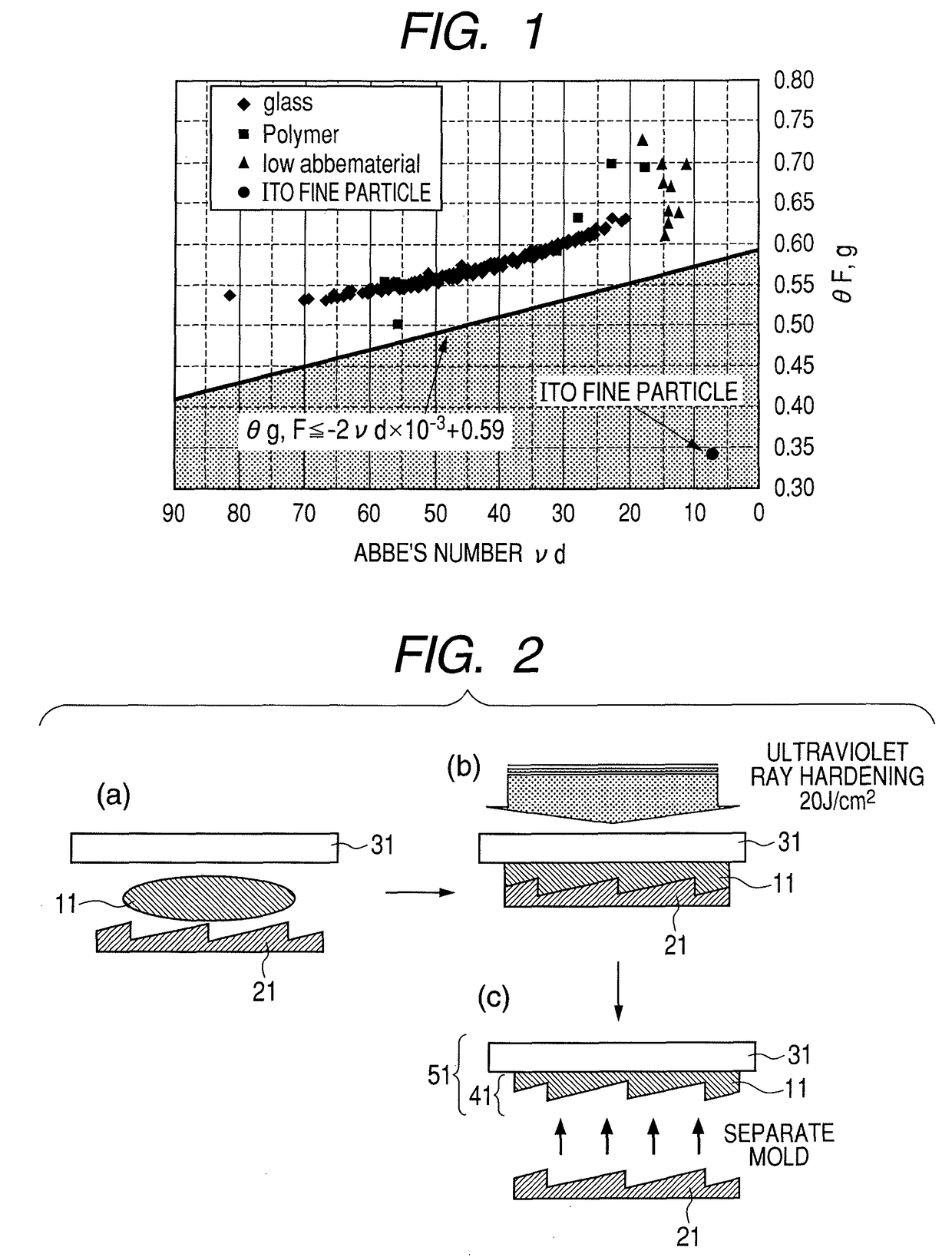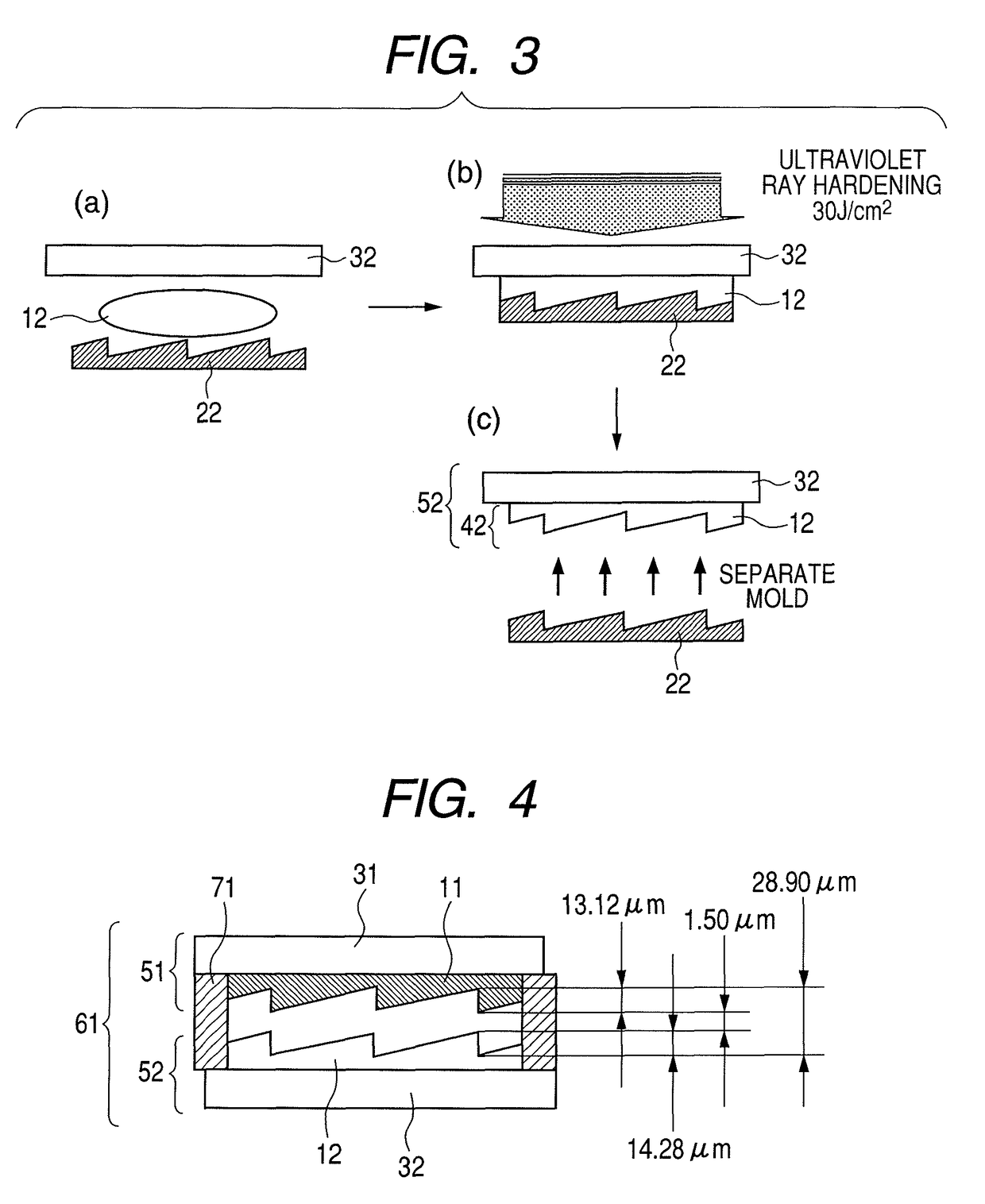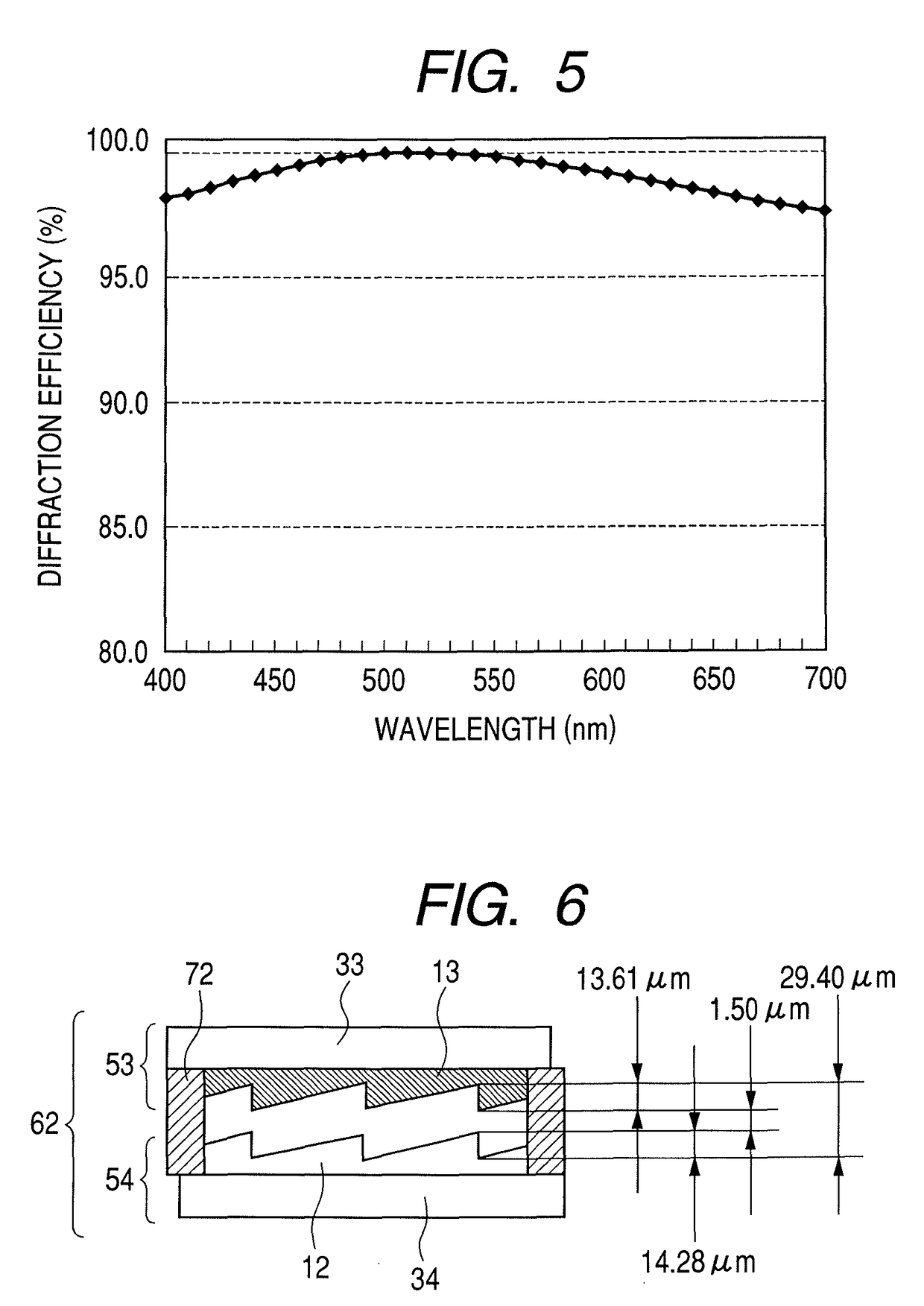Optical material and optical element, diffraction optical element, and stacked type diffraction optical element molded thereof
a technology of optical elements and optical materials, applied in the direction of optics, diffraction gratings, instruments, etc., can solve the problems of increasing apparent particle size, difficult to correct chromatic aberration sufficiently, and increasing the agglomeration of fine particles of metal oxides, so as to reduce optical scattering and low dispersion characteristics
- Summary
- Abstract
- Description
- Claims
- Application Information
AI Technical Summary
Benefits of technology
Problems solved by technology
Method used
Image
Examples
example 1
[0065]A configuration and fabrication method of a stacked type diffraction optical element according to example 1 will be described with reference to (a), (b) and (c) of FIG. 2, FIGS. 3 and 4. First, 10.00 g of 1-vinyl-2-pyrrolidone (whose refractive index is 1.523) and 0.31 g of 1-hydroxycyclohexylphenylketone serving as an optical initiator were added to a 45.00 g of a water solution containing 1.30 wt % of colloidally dispersed fine particles of a conductive polymer, namely PEDOT / PSS (manufactured by Aldrich Co.; product No.: 48309-5 & 56059-6; average diameter: 80 nm; refractive index: 1.529 (listed value)). The mixture was stirred using a stirrer to facilitate dispersion and dissolution. Subsequently, the solvent was removed under reduced pressure, and thus an optical material 11 was prepared.
[0066]Next, as illustrated in (a) of FIG. 2, the optical material 11 was supplied to a die 21 formed into a shape of a diffraction grating for this example. Then, as illustrated in (b) of ...
example 2
[0071]An optical material 13 was prepared using the same method as example 1 except that the amount of the water solution with a colloidal dispersion was 65.00 g.
[0072]Also, using a die formed into a shape of a diffraction grating for this example and a flat glass plate 33, a diffraction optical element 53 was fabricated by the same molding method as example 1. Optical characteristics of the optical material 13 were as follows: nd=1.5249; νd=22.29; θg,F=0.422. The optical characteristics satisfy θg,F≦−2νd×10−3+0.59 and θg,F≦0.45.
[0073]On the other hand, to fabricate another optical element, a diffraction optical element 54 was fabricated using a die formed into a shape of a diffraction grating for this example and a flat glass plate 34. The optical material 12 used was the same as in example 1 and optical characteristics of the optical material 12 were as follows: nd=1.5228 and νd=51.42.
[0074]Next, anti-reflection films were formed on diffraction planes of the diffraction optical el...
example 3
[0098]This example concerns a multi-layered diffraction optical element which has a configuration shown in FIG. 12. Details of the example will be described with reference to (a), (b) and (c) of FIG. 13 and (a), (b) and (c) of FIG. 14. FIG. 12 is a sectional view illustrating an example of a double-layered diffraction optical element 65. In FIG. 12, the double-layered diffraction optical element 65 includes a glass substrate 39, first layer 81 and second layer 82 stacked on the first layer 81 so as not to form a gap between the first layer 81 and the second layer 82. The second layer 82 is made of an optical material which satisfies the condition θg,F≦−2νd×10−3+0.59 shown in examples 1 and 2. The first layer 81 is made of an optical material whose Abbe's number is larger than the Abbe's number of the optical material of the second layer 82. And the first layer 81 is made of an optical material whose refractive index is larger than the refractive index of the optical material of the ...
PUM
| Property | Measurement | Unit |
|---|---|---|
| average diameter | aaaaa | aaaaa |
| diameter | aaaaa | aaaaa |
| diameter | aaaaa | aaaaa |
Abstract
Description
Claims
Application Information
 Login to View More
Login to View More - R&D
- Intellectual Property
- Life Sciences
- Materials
- Tech Scout
- Unparalleled Data Quality
- Higher Quality Content
- 60% Fewer Hallucinations
Browse by: Latest US Patents, China's latest patents, Technical Efficacy Thesaurus, Application Domain, Technology Topic, Popular Technical Reports.
© 2025 PatSnap. All rights reserved.Legal|Privacy policy|Modern Slavery Act Transparency Statement|Sitemap|About US| Contact US: help@patsnap.com



